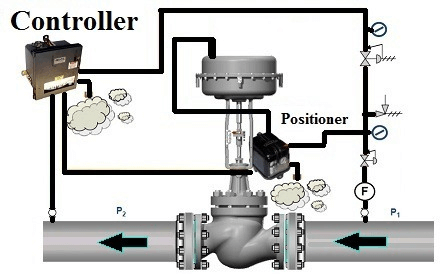Maximizing System Control with High-Performance Control Valves

Maximize Power Financial Savings and Convenience With Advanced Structure Automation Controls
In the world of modern design and center administration, the assimilation of sophisticated structure automation manages stands as a pivotal advancement. By taking advantage of the power of automation, structures can adapt, respond, and advance in ways that were when unimaginable.
Energy Performance Advantages
Power performance benefits can substantially lower energy consumption and operational expenses in structures. By implementing energy-efficient methods and modern technologies, building owners and operators can accomplish significant financial savings while also adding to environmental sustainability. One of the primary advantages of enhancing energy effectiveness in structures is the decrease of energy costs. Energy-efficient systems, such as innovative building automation controls, can optimize making use of resources like home heating, air conditioning, and lights, leading to lower power expenditures with time.
Moreover, boosted power effectiveness can prolong the life-span of building equipment and systems. By running much more efficiently, heating and cooling systems, lighting fixtures, and various other building parts experience less damage, leading to reduced maintenance and replacement prices. Additionally, energy-efficient structures commonly command greater residential property values and rental prices, providing lasting financial advantages to proprietors.
Additionally, energy performance can improve owner comfort and performance. Properly controlled interior environments with ideal lights and thermal conditions develop an even more enjoyable and helpful work area, causing boosted employee contentment and performance. In general, the power performance advantages associated with sophisticated structure automation controls are complex, encompassing cost savings, environmental stewardship, and passenger well-being.
Boosted Comfort Control
Enhancing comfort control in building atmospheres needs an advanced assimilation of innovative automation systems for ideal passenger health. By making use of innovative building automation controls, facilities can tailor the indoor environment to meet the certain demands and choices of owners. These systems make it possible for accurate guideline of ventilation, lighting, and temperature level, developing a productive and comfy environment. Resident satisfaction and performance are very closely linked to thermal comfort, making it important to have systems in area that can adapt to changing problems in real-time.
By including these advanced controls, buildings can not just enhance comfort however additionally boost power efficiency by optimizing system operations based on actual tenancy and use patterns. Inevitably, focusing on occupant comfort through advanced automation systems leads to a much more delightful and healthier indoor atmosphere.
Functional Efficiency Improvements

Furthermore, the implementation of real-time monitoring and analytics devices allows building operators to recognize energy ineffectiveness and operational abnormalities immediately. By constantly checking power usage patterns and system efficiency metrics, modifications can be made in real-time to optimize energy intake and make sure peak functional effectiveness. control valves. In addition, integrating need feedback techniques right into building automation controls can further visit our website boost operational effectiveness by dynamically adjusting power usage based upon grid problems and prices signals
Indoor Climate Optimization
Effective interior climate optimization is an essential aspect Get More Information of building automation controls, making sure occupants' comfort and wellness while maximizing power financial savings. By using advanced sensing units and controls, building automation systems can continually keep an eye on and change temperature, humidity levels, air high quality, and air flow to develop an optimum interior environment. Maintaining comfortable and constant conditions not only improves passenger satisfaction however likewise enhances performance and total well-being.
Indoor climate optimization additionally plays an essential function in energy effectiveness. By fine-tuning air conditioning, home heating, and ventilation systems based on real-time information and tenancy patterns, building automation controls can substantially decrease energy usage - control valves. As an example, carrying out methods such as demand-controlled ventilation and thermal zoning can help minimize power waste while making certain that each location of the building receives the essential conditioning.

Sustainable Environment Production
Building automation regulates not only maximize indoor environment conditions for power effectiveness and occupant convenience but additionally lay the structure for creating a lasting environment through critical administration of resources and systems. By incorporating advanced structure automation innovations, such as sensing units, actuators, and smart software application, facilities can readjust and keep an eye on energy use in real-time to reduce waste and lower their carbon footprint. These systems allow anticipating maintenance, determining possible issues prior to they rise and enhancing tools efficiency to boost longevity and effectiveness.
In internet addition, sustainable setting production expands beyond power management to encompass water preservation, waste reduction, and indoor air top quality improvement. Structure automation controls can regulate water use, identify leakages, and guarantee proper garbage disposal techniques, adding to general sustainability efforts. Furthermore, by keeping track of and managing air flow and purification systems, these technologies enhance resident health and wellness and performance while lowering power intake related to a/c procedures.
Conclusion
In final thought, advanced structure automation controls offer considerable advantages in terms of energy financial savings, comfort control, operational performance, indoor environment optimization, and producing a lasting environment. By applying these controls, buildings can attain optimal performance while decreasing energy consumption and improving resident comfort. It is obvious that using sophisticated automation innovation is crucial in enhancing structure performance and developing an extra sustainable future.
Energy efficiency advantages can substantially minimize energy consumption and functional costs in buildings. Generally, the power performance benefits connected with advanced building automation controls are complex, including price financial savings, environmental stewardship, and owner well-being.
Furthermore, including demand reaction methods right into building automation controls can better boost operational efficiency by dynamically changing power usage based on grid conditions and rates signals.
Structure automation manages not just maximize interior environment problems for power effectiveness and passenger convenience yet additionally lay the structure for creating a lasting setting with tactical management of systems and resources.In final thought, advanced building automation controls deal substantial benefits in terms of energy savings, comfort control, functional performance, interior environment optimization, and developing a lasting atmosphere.